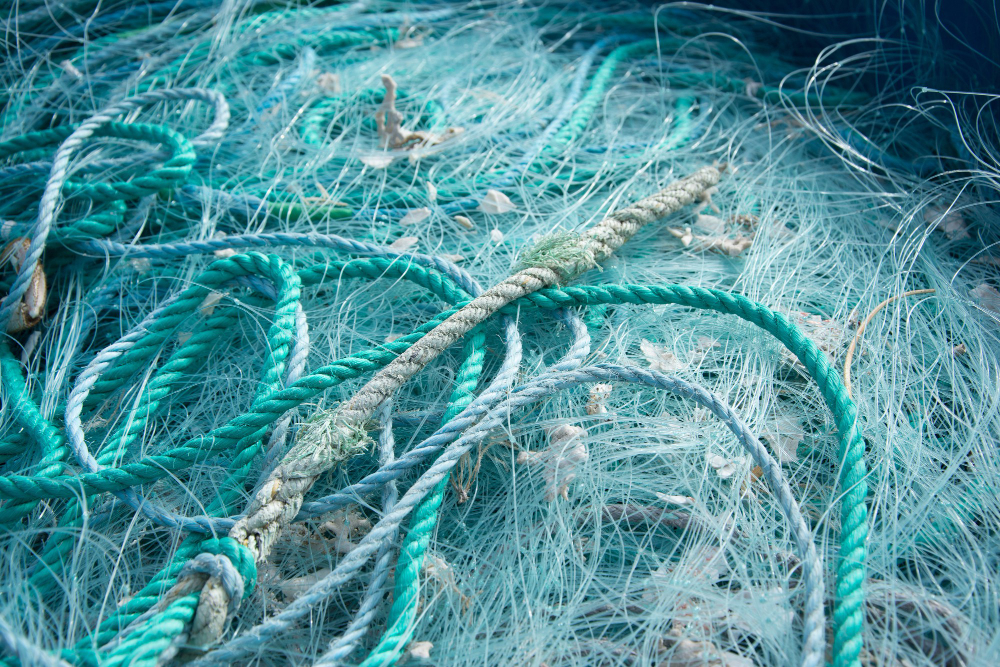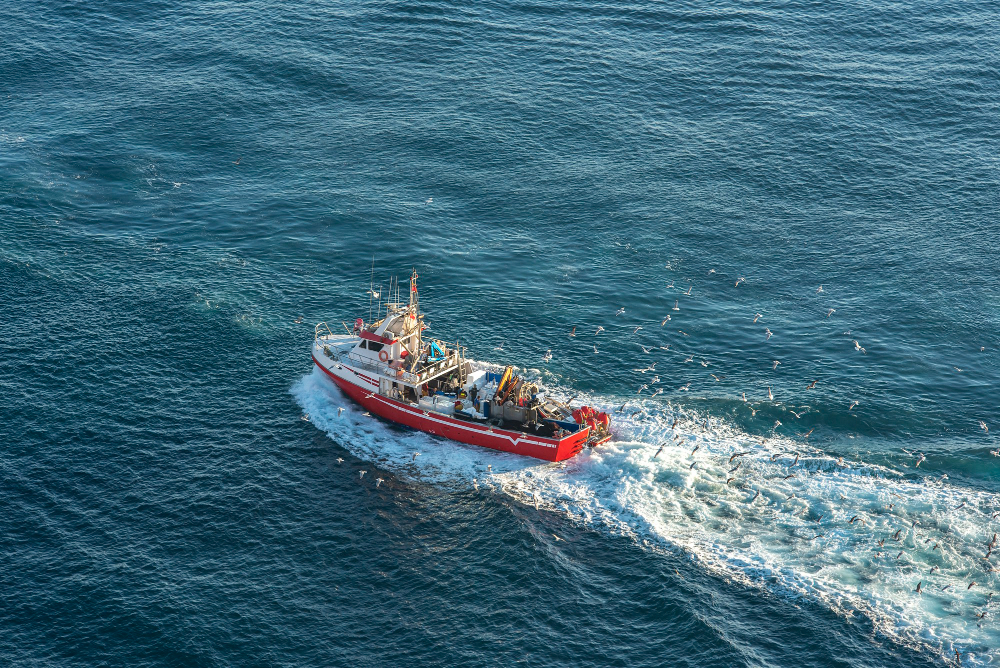
Trawling
The boats that are used for trawling are called trawlers or draggers. Trawlers vary in size from small open boats with as little as 30 hp (22 kW) engines to large factory trawlers with over 10,000 hp (7.5 MW). Trawling can be carried out by one trawler or by two trawlers fishing cooperatively (pair trawling).
Trawling can be divided into bottom trawling and midwater trawling, depending on how high the trawl (net) is in the water column. Bottom trawling is towing the trawl along (benthic trawling) or close to (demersal trawling) the sea floor. Bottom trawling is an industrial fishing method in which a large net with heavy weights is dragged across the seafloor, scooping up everything in its path.
Midwater trawling or pelagic trawling target fishes that are living in the upper water column of the ocean. The funnel shaped trawl nets are hauled by one or two boats. This method is generally used to catch fishes of a single species. Unlike bottom trawling, this type of trawl does not come into contact with the sea bed and hence is not involved in damage of marine habitat. Some species caught with this trawling method are mackerel, herring, and hoki.
Midwater trawling is also known as pelagic trawling. Midwater trawling catches pelagic fish, whereas bottom trawling targets both bottom-living fish (groundfish) and semi-pelagic fish.

Longline Fishing
In some unstable fisheries, such as the Patagonian toothfish, fishermen may be limited to as few as 25 hooks per line. In contrast, commercial longliners in certain robust fisheries of the Bering Sea and North Pacific generally run over 2,500 hand-baited hooks on a single series of connected lines many miles in length.
Longlines can be set to hang near the surface (pelagic longline) to catch fish such as tuna and swordfish or along the sea floor (demersal longline) for groundfish such as halibut or cod. Longliners fishing for sablefish, also referred to as black cod, occasionally set gear on the sea floor at depths exceeding 1,100 metres (3,600 ft) using relatively simple equipment. Longlines with traps attached rather than hooks can be used for crab fishing in deep waters.
In Hawaii, where Japanese immigrants introduced longlining in 1917, longline fishing was known as flagline fishing because of the use of flags to mark floats from which hooks were suspended. The term "flagline fishing" persisted until local fishing vessels began to use modern monofilament mainline, line setters, and large, hydraulically powered reels, when the term "longline fishing" was adopted.
